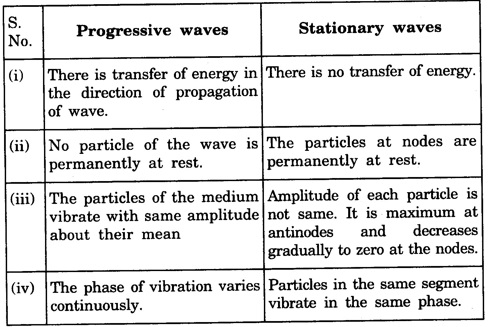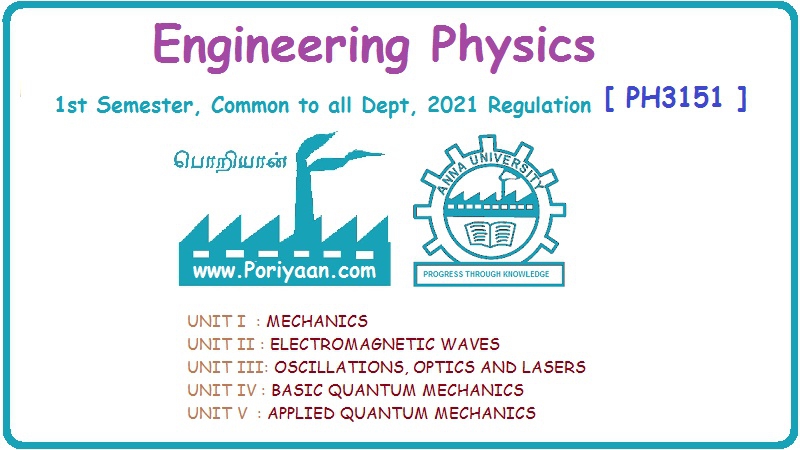Engineering Physics: Unit III: a. Oscillations
Two Marks Questions with Answers
Oscillations | Engineering Physics
'2' Marks Questions with answers: Engineering Physics: Oscillations
Part – ‘A’ '2' Marks Questions with answers 1. Define simple harmonic motion. When the acceleration of particle is directly proportional to its displacement from its equilibrium position and it is always directed towards equilibrium position, then the motion of the particle is said to be simple harmonic motion. 2. What are the characteristics of simple harmonic motion? • The motion must be periodic. • The motion is oscillatory ie., to and fro along a straight line or along a curved path about a mean position. • The body executing simple harmonic motion is acted upon by a restoring force whose magnitude is proportional to the displacement and its direction is always towards the mean position. • If there is no air resistance or friction, the motion once · started will continue indefinitely. 3. What are examples of simple harmonic motions? • Vibrations of a tuning fork. • Vibrations of a sonometer wire. • Vertical oscillations of the liquid column in a U-tube. • Angular oscillations of a torsion pendulum. 4. What are the types of oscillation? 1. Free oscillations 2. Damped oscillations 3. Forced oscillations 5. What is resonance? The phenomenon of making a body vibrate with its natural frequency under the influence of another vibrating body with the same frequency is called resonance. 6. What is sharpness of resonance? The rate of change (fall) of amplitude with the change of forcing frequency on each side of resonant frequency is known as sharpness of resonance. 7. Define progressive wave. Progressive wave originating from a point source and propagating through an isotropic medium travel with equal velocity in all directions. At any instant, the wavefront (locus of all particles vibrating with the same phase) will be spherical in nature. If the sphere of very large radius is considered, the spherical wave will approximate to a plane surface and the waves are called plane progressive waves. 8. What are the characteristics of progressive wave? 1. Each particle of the medium executes vibration about its mean position. The disturbance progresses onward from one particle to another 2. The particles of the medium vibrate with same amplitude about their mean positions. 3. Each successive particle of the medium performs a motion similar to that of its predecessor along the propagation of the wave, but later in time. 4. The phase of every particle changes from 0 to 2π. 9. Define standing waves. When two progressive waves of same amplitude and wavelength travelling along a straight line in opposite directions superimpose on each other, stationary waves are formed. 10. What are the characteristics of standing waves? 1. The waveform remains stationary. 2. Nodes and antinodes are formed alternately. 3. The points where displacement is zero are called nodes and the points where the displacement is maximum are called antinodes. 4. Pressure changes are maximum at nodes and minimum at antinodes. 11. What are the differences between progressive waves and stationary waves? 12. State Doppler effect. The phenomenon of the apparent change in the frequency of the sound due to relative motion between the source of sound and the observer is called Doppler effect.
Engineering Physics: Unit III: a. Oscillations : Tag: : Oscillations | Engineering Physics - Two Marks Questions with Answers
Related Topics
Related Subjects
Engineering Physics
PH3151 1st semester | 2021 Regulation | 1st Semester Common to all Dept 2021 Regulation
